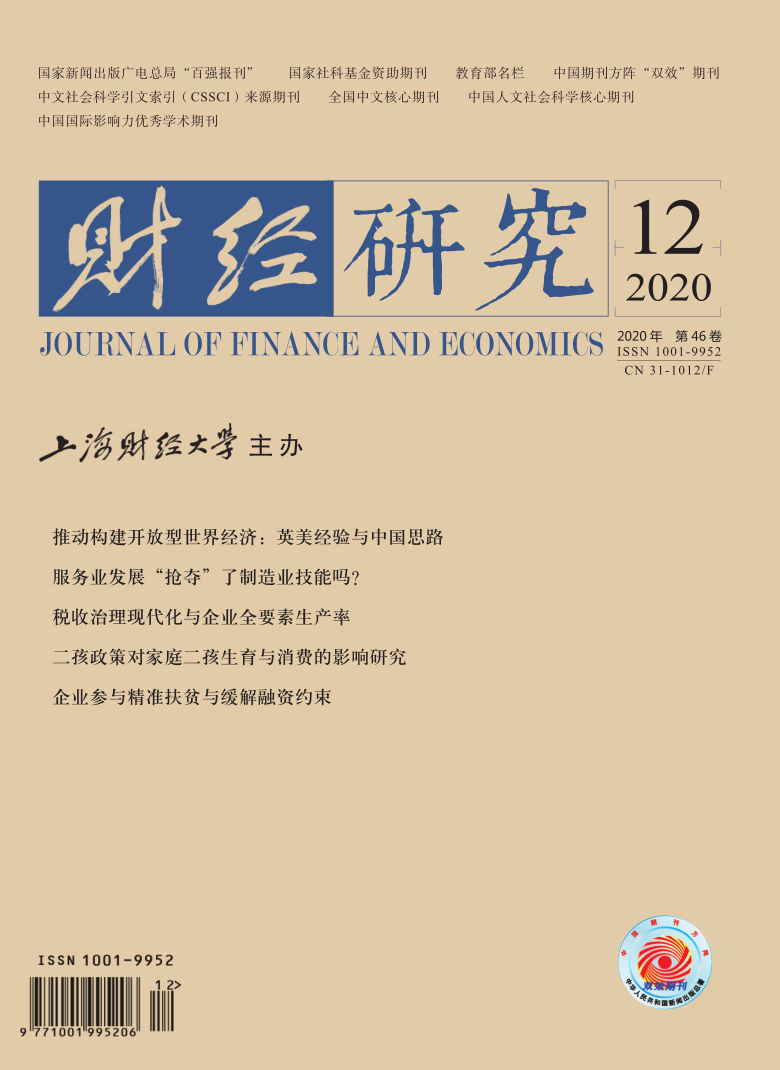改革开放以来,中国经济的发展既显示出各国发展的一般规律,也呈现出许多独有特征,需要从新的视角进行分析。文章将中国经济波动与制度变迁相联系,构建了包含具有持久效应的趋势冲击和流动性约束的小国开放经济动态随机一般均衡模型,较好地解释了中国经济波动特征,识别了经济波动背后的驱动因素。研究发现,随着中国经济体制的逐渐完善,对经济波动影响短暂的周期冲击和影响持久的趋势冲击都显示出逐渐衰减的趋势,从而经济波幅逐渐缩小。由于趋势冲击的影响下降更快,周期冲击逐渐成为经济波动的主要来源。
趋势冲击、流动性约束与中国经济波动
摘要
参考文献
4 杜婷,庞东. 制度冲击与中国经济的周期波动[J]. 数量经济技术经济研究,2006,(6):34−43. DOI:10.3969/j.issn.1000-3894.2006.06.004
7 科斯, 阿尔钦, 诺斯, 等. 财产权利与制度变迁−产权学派与新制度学派译文集[M]. 上海: 上海三联书店, 上海人民出版社, 1994.
15 Aguiar M,Gopinath G. Emerging market business cycles:The cycle is the trend[J]. Journal of Political Economy,2007,115(1): 69−102. DOI:10.1086/511283
17 Beveridge S,Nelson C R. A new approach to decomposition of economic time series into permanent and transitory components with particular attention to measurement of the ‘business cycle’[J]. Journal of Monetary Economics,1981,7(2): 151−174. DOI:10.1016/0304-3932(81)90040-4
18 Boz E,Daude C,Durdu C B. Emerging market business cycles:Learning about the trend[J]. Journal of Monetary Economics,2011,58(6−8): 616−631. DOI:10.1016/j.jmoneco.2011.11.003
19 Campbell J Y,Mankiw N G. Consumption,income,and interest rates:Reinterpreting the time series evidence[J]. NBER Macroeconomics Annual,1989,4: 185−216. DOI:10.1086/654107
20 Chang R,Fernández A. On the sources of aggregate fluctuations in emerging economies[J]. International Economic Review,2013,54(4): 1265−1293. DOI:10.1111/iere.12036
21 Cho J O,Cooley T F. The business cycle with nominal contracts[J]. Economic Theory,1995,6(1): 13−33. DOI:10.1007/BF01213939
22 Chow G C,Li K W. China’s economic growth:1952-2010[J]. Economic Development and Cultural Change,2002,51(1): 247−256. DOI:10.1086/344158
23 Cochrane J H. How big is the random walk in GNP?[J]. Journal of Political Economy,1988,96(5): 893−920. DOI:10.1086/261569
24 García-Cicco J,Pancrazi R,Uribe M. Real business cycles in emerging countries?[J]. American Economic Review,2010,100(5): 2510−2531. DOI:10.1257/aer.100.5.2510
25 Guseh J S. Government size and economic growth in developing countries:A political-economy framework[J]. Journal of Macroeconomics,1997,19(1): 175−192. DOI:10.1016/S0164-0704(97)00010-4
26 Huang K X D, Liu Z, Zha T. Learning, adaptive expectations and technology shocks[R]. FRB of Atlanta Working Paper No.2008-20, 2008.
27 Ireland P N. Money’s role in the monetary business cycle[J]. Journal of Money,Credit,and Banking,2004,36(6): 969−983. DOI:10.1353/mcb.2005.0010
28 Khan H,Tsoukalas J. The quantitative importance of news shocks in estimated DSGE models[J]. Journal of Money,Credit and Banking,2012,44(8): 1535−1561. DOI:10.1111/j.1538-4616.2012.00543.x
29 Kydland F E,Prescott E C. Time to build and aggregate fluctuations[J]. Econometrica,1982,50(6): 1345−1370. DOI:10.2307/1913386
引用本文
胡永刚, 苗恩光. 趋势冲击、流动性约束与中国经济波动[J]. 财经研究, 2020, 46(12): 34-48.
导出参考文献,格式为:






 5433
5433  5781
5781

